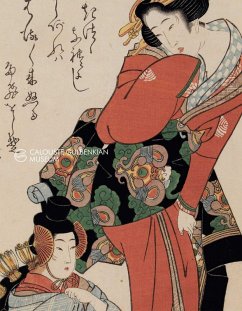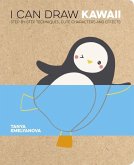Calouste Gulbenkian amassed a remarkable collection of Japanese art. This publication explores this aspect of his activity, bringing together a large number of Japanese prints from the 17th to the 19th centuries. Calouste Gulbenkian amassed a remarkable collection of Japanese art. This lesser known facet of the collector’s activity was explored in the exhibition Floating world: ‘ukiyo-e’ Japanese prints, which presented a large number of Japanese prints produced between the 17th and 19th centuries that belong entirely to the Museum’s collection. The exhibition focused on the concept of ukiyo, which means ‘floating world’ and refers to the fleeting pleasures of everyday life. The catalogue is divided into two parts. The first is a set of four essays, including three by the exhibition curators. In the first text, Jorge Rodrigues explores the set of prints acquired by Calouste Gulbenkian for his collection. Francesca Neglia then looks at two of the most popular iconographic themes in ukiyo-e: the figure of the courtesan and landscapes. In the third essay, Hannah Sigur discusses the literary network associated with ukiyo-e. Finally, Rui Xavier, Preventive Conservation Coordinator at the Gulbenkian Museum and curator of the Gulbenkian Collection’s lacquerware, writes about the damage sustained by the collection of Japanese prints after the 1967 Lisbon’s floods and the remarkable restoration process that followed. The second part of the publication is similar in structure to the accompanying exhibition sections and includes texts on specific works or groups of works. The first chapter, 'Different views of nature and landscape', deals with landscape painting as an autonomous genre of ukiyo-e; in ‘Uki-e’: perspective images, the focus is on uki-e, a genre of prints made by adopting Western geometric perspective; Yoshiwara’s ‘floating world’ revolves around the authorized leisure district of Edo (present-day Tokyo) and its influence on the production of prints depicting women; ‘Ukiyo-e’s literary web' deals with the unique and contradictory relationship between scholarly literature and poetry and the main protagonists in the ‘floating world’, such as kabuki theater actors and the so-called ‘women for play’; finally, 'The Tōkaidō Stations' covers the famous print series of the same name, comprising prints on various themes related to the Tōkaidō route, which ran from Edo to the imperial city of Kyoto.
Bitte wählen Sie Ihr Anliegen aus.
Rechnungen
Retourenschein anfordern
Bestellstatus
Storno








